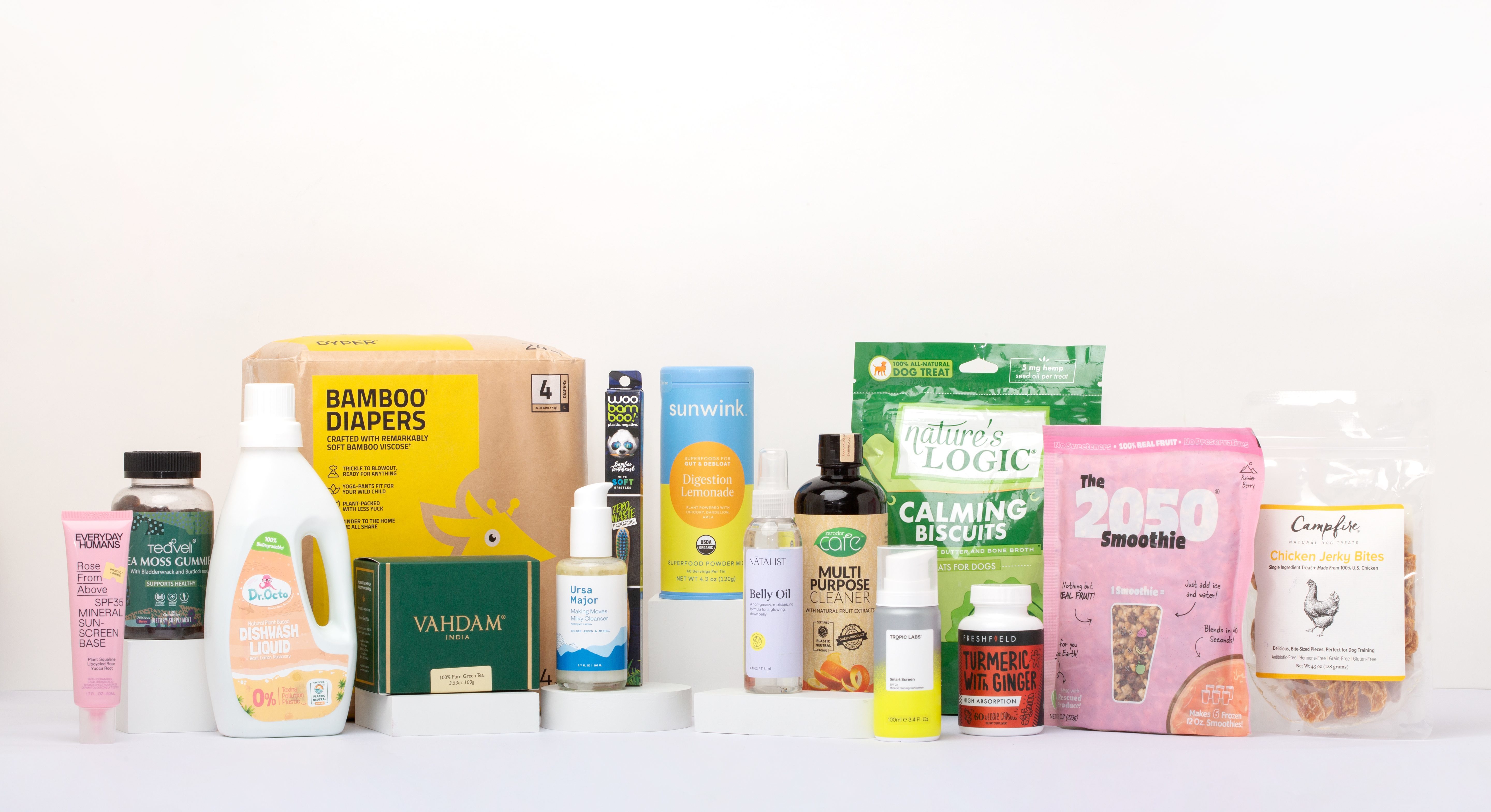6 Steps to Prepare for California's "Truth in Labeling" Law on Recyclability Claims
Bringing you the latest: We're continuously monitoring packaging regulatory developments to bring you critical compliance information as soon as it's available. Follow us on LinkedIn to make sure you're first to hear about these critical updates.
Key Updates Summary
California's Truth in Labeling law (SB-343) represents the most significant change to recyclability claims in U.S. history. Starting in 2026, brands can only use the recycling symbol or make recyclability claims if their packaging meets strict, science-based criteria—or face criminal penalties.
CalRecycle's 2025 Material Characterization Study assessed 90+ materials with sobering results: only ~35 materials passed both collection and sorting criteria. Common failures include,flexible plastics and multilayer film, PVC, PS, and fiber with coatings. This study provides insight into what's legally recyclable in California,basis the current infrastructure, and urges brands to stop labeling non-compliant materials as recyclable.
What Is California's Truth in Labeling Law?
California's SB-343, known as the Truth in Labeling law, fundamentally changes how brands can communicate about recyclability. Think of it as "prove it or lose it"—companies must substantiate every recyclability claim with documented evidence that their packaging actually gets recycled in California.
Who: CPG brands selling products in California with any packaging materials (plastic, paper, glass, metal, and compostable materials).
What: You must meet strict recyclability criteria before using the chasing arrows symbol or any recyclability claims. No more assumptions—you need proof.
When: Law goes into effect in 2026, but CalRecycle's Material Characterization Study results (published in 2025) provides critical data on which materials could qualify.
Where: California, but this could set the precedent for national standards as other states watch closely.
Why: To revive consumer trust in recycling and prevent greenwashing by giving consumers accurate information about what's actually recyclable in the state.
The Four Pillars of California Recyclability
California established the nation's most comprehensive definition of recyclability. Your packaging must meet ALL four criteria:
1. Collection Coverage (≥60% Population)
The material type and form must be collected for recycling by programs serving at least 60% of California's population.
2. Sorting & Reprocessing (≥60% of Facilities)
The material must be sorted into defined streams by large-volume processing facilities serving ≥60% of recycling programs, and reclaimed into feedstock for new products—not just collected or stockpiled.
3. Design for Recyclability
The product/packaging must not include inks, adhesives, labels, or components that impair recycling. For plastic, it must comply with the APR Design® Guide.
4. No Hazardous Chemicals
Must not contain intentionally added chemicals prohibited under California regulations or PFAS (per- and polyfluoroalkyl substances) ≥ 100 ppm.
What's Not Allowed
The chasing arrows symbol is now regulated like a trademark. Using it on non-recyclable materials is deceptive and illegal—and violations are criminal offenses, not civil penalties.
Specifically prohibited:
- Chasing arrows symbol on non-compliant materials
- Textual recyclability claims without substantiation
- Digital/online recyclability claims for non-compliant materials
Alternative Pathways to Recyclability
Even if your packaging doesn't meet the four standard criteria, it can still be considered recyclable if:
- High Recovery Rate: The item has a ≥75% actual recycling rate in California
- Non-Curbside Programs: For programs like store take-back:
- Before January 1, 2030: ≥60% recovery rate
- After January 1, 2030: ≥75% recovery rate
- State/Federal Programs: The item is governed under an existing recycling program (like CRV bottles) and doesn't cause curbside contamination
6 Steps to Prepare for California's Truth in Labeling Law
1. Audit Your Current Claims
Review all packaging, marketing materials, and digital content for recyclability claims. Document what claims you're making and where.
How rePurpose helps: Our platform helps you store and organize your current packaging claims data so you can easily track and manage compliance requirements.
2. Assess Your Packaging Against the Four Pillars
Evaluate each SKU against California's recyclability criteria using CalRecycle's Material Characterization Study and APR Design Guide requirements.
How rePurpose helps: Our platform automatically checks your packaging data against all four California criteria and helps you assess what packages are recyclable in the state.
3. Build Your Substantiation Documentation
California requires brands to maintain written justification for all recyclability claims, including evidence around environmental impact, design compliance and infrastructure availability that packaging meets California criteria.
How rePurpose helps: We identify validation requirements and generate substantiation documentation to help you easily prepare for data requests and audits.
4. Plan for Packaging Redesign
For non-compliant materials, consider redesign toward mono-materials, remove problematic inks/adhesives, and eliminate or limit PFAS to meet California standards.
How rePurpose helps: Our platform suggests packaging redesign strategies to improve recyclability.
5. Explore Your Claim Options
Develop compliant marketing language that accurately reflects your packaging's recyclability status without overstepping California's requirements, in alignment with FTC Green Guides.
How rePurpose helps: Our platform suggests applicable claims to help you best communicate your sustainability impact.
6. Monitor Ongoing Changes
CalRecycle updates its Material Characterization Study every five years, potentially changing which materials qualify as recyclable.
How rePurpose helps: Our platform automatically updates with new regulatory changes and alerts you to impacts on your portfolio.
Brand Owner Implications
Immediate Actions Required:
- Check packaging labeling and revise non-compliant claims
- Own substantiation and evidence for all recyclability representations
- Understand criminal offense implications of non-compliance
- Prepare for potential inability to sell non-compliant products in California
Long-Term Strategic Considerations:
- Packaging redesign toward APR compliant designs, mono-materials and easy separation
- Investment in supply chain transparency and traceability
- Development of robust documentation systems
- Coordination with EPR compliance requirements
Other Laws Working in Conjunction
California's Truth in Labeling law works alongside several other environmental marketing regulations:
- CA Public Resources Code 42355.5: All environmental marketing claims
- Business & Professions Code 17580-17580.5: All environmental representations (e.g., "eco-friendly," "green," "sustainable")
- Health & Safety Code 25249 (Prop 65): Toxic substances
- FTC Green Guides (16 CFR Part 260): Federal environmental marketing standards
Timeline for Compliance
2025: CalRecycle publishes updated Material Characterization Study providing insight into which materials are currently widely collected and sorted for recycling in California on April 4th, 2025
2026: Truth in Labeling law goes into effect. All recyclability claims must meet California's strict criteria or face criminal penalties by October 4th, 2026 (Applies to goods produced after this date, not goods sold)
2027 and beyond: CalRecycle updates the Material Characterization Study every five years, potentially changing compliance requirements.
Areas where more clarity is needed:
- While the current MCS study focuses on access to collection and sortation data, additional data is required on how the sorted materials reach the end destination for recycling, and whether those end prcoessing facilities are in compliance with the Basel convention- a key component of SB 343.
Why Acting Now Protects Your Brand
Companies that prepare for California's Truth in Labeling law during 2025 will have significant advantages:
Legal Protection: Avoid criminal penalties and potential market access restrictions in the nation's largest state economy.
Future-Proofing: California often sets precedent for national standards. Early compliance positions you ahead of likely federal requirements.
Consumer Trust: Substantiated recyclability claims build authentic brand credibility rather than exposing you to greenwashing accusations.
Navigate Truth in Labeling Complexity with Expert Support
California's Truth in Labeling law doesn't have to derail your packaging strategy. The rePurpose platform transforms recyclability compliance complexity into a streamlined process that protects your brand while maintaining marketing effectiveness.
The impact for companies like yours:
- Avoid criminal penalties and market access restrictions
- $25,000-$75,000/year saved in legal consulting fees
- Customers typically reduce their compliance complexity significantly
- One platform covers all environmental marketing regulations
Ready to ensure compliance? Contact our team to learn how the rePurpose platform can protect your brand while maintaining effective sustainability marketing.
For more regulatory intelligence and compliance guidance, explore our regulatory resource library.
Get Started with Verified Plastic Recovery for your Brand
Get Started with Packaging EPR Compliance for your Brand
rePurpose Global is here to support your sustainability roadmap with impactful and measurable Plastic Action solutions that deliver immediate results. Partner with us to measure your plastic footprint, fund plastic waste recovery, and create strong sustainability messaging for your brand.
Talk to our team to explore how we can work together.
rePurpose Global's EPR compliance platform is here to support you in preparing for the upcoming regulations in multiple states in the US and comply with no errors. Partner with us to create detailed assessment reports, pre-empt fees and reduce time & cost involved in the process.
Talk to our team to explore how we can work together.

Related Posts
Guide: How to prepare your packaging reporting for US EPR programs in 2025
EPR deadlines are coming. Learn how to prepare your brand for 2025 compliance, reduce risk, and turn packaging data into opportunity.
EPR Foundations: What is a Packaging Type?
Learn how packaging types impact EPR compliance and why accurate classification matters for reporting, fees, and sustainability goals.
EPR Foundations: What are Recycled Content Targets?
Understand how Recycled Content Targets work, and how brands can meet EPR rules while improving packaging sustainability.

.png)
.jpg)



.png)







